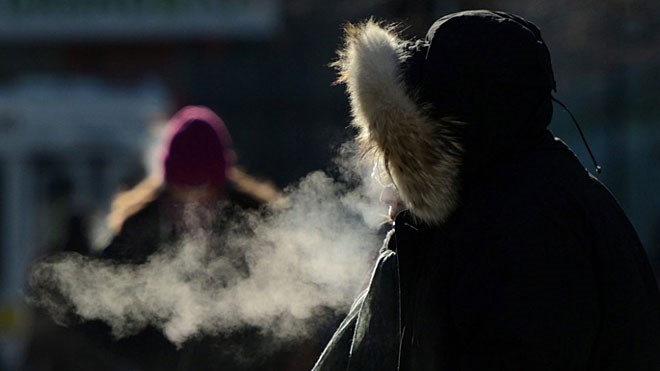Although we assume most people in Northern Ontario are pretty good at avoiding frostbite and hypothermia, the Sudbury & District Health Unit is offering a few tips to keep you, your family and your skin safe in cold weather — particularly fitting today with Greater Sudbury in the midst of a deep freeze.
Suffering frostbite means that skin has actually frozen, which is never a good thing. If frostbite is suspected, immediately treat the area by somehow covering it. Never rub or massage the area because it could damage the skin tissue.
If possible, gently place the area in warm water (not hot) until it is warm and no longer numb. Apply a sterile dressing to the area, and place dressings between fingers and toes if they are affected. Seek medical attention to avoid further complications.
Frostbite is bad, but hypothermia is a life-threatening condition. It occurs when the body is exposed to the cold for so long, it loses more heat than it can generate.
Symptoms of hypothermia include shivering, drowsiness, confusion, slurred speech, loss of co-ordination, and pale, bluish lips. When the shivering stops, that’s when things have gotten really bad, and unconsciousness can soon follow.
Treat hypothermia by moving the person to shelter, replacing wet clothing with dry clothing and wrapping them in warm blankets. Keep the person lying flat and get immediate medical attention.
To prevent cold related injuries:
Listen to the weather forecast and plan accordingly.
Dress in layers, with a wind resistant outer layer. Wear a hat and mittens or insulated gloves. Keep your face warm by wearing a scarf, neck tube or facemask.
Wear warm and waterproof footwear that fits properly.
Stay dry. Wet clothing chills the body rapidly. Remove outer layers of clothing or open your coat if you are sweating.
Stay active, walking or running will help warm you by generating body heat.
Seek shelter from the wind.
Monitor individuals who have dementia, a psychiatric diagnosis, or who are under the influence of alcohol or drugs as they are at higher risk for cold related injuries.
Speak to your doctor or pharmacist as certain medications can also make you more susceptible.
On very cold days, check-in on neighbours who may be vulnerable to cold due to age, living conditions, health conditions, reduced mobility, or isolation.
The homeless are also particularly vulnerable during cold snaps. Emergency shelters in the city offer extended hours during those times to offer protection from the cold for those who need it. The health unit encourages the public to donate mittens, toques and other cold-weather apparel to city missions and homeless outreach programs to further help protect vulnerable people from the cold.
